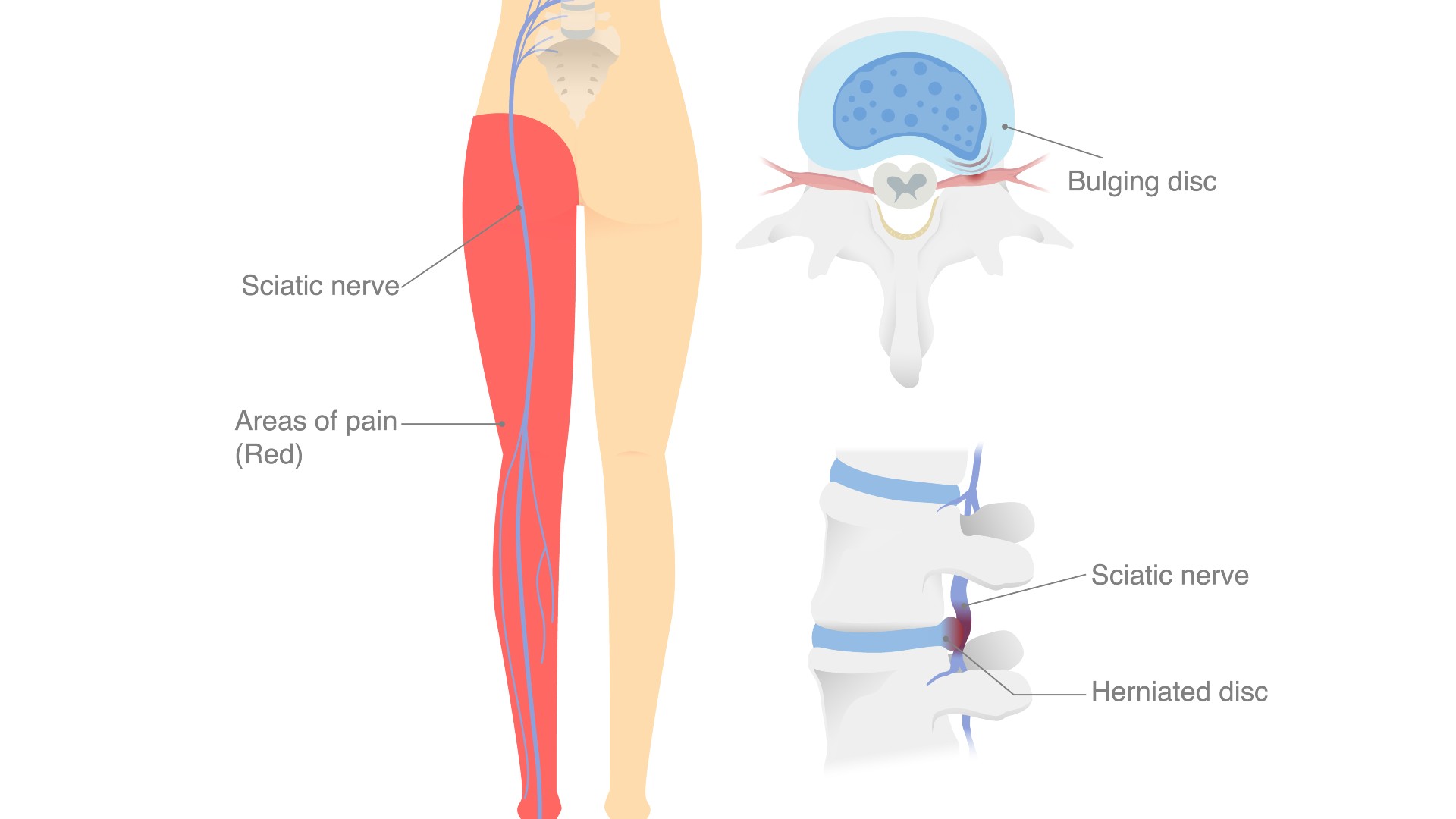
Yoga for sciatica, anyone? We know this much — sciatica isn’t fun. It’s about as enjoyable as finishing leg day at the gym just to find an unacceptably tall staircase at the exit (been there). And if you suffer from sciatica or generalized back pain, you’ll be looking for ways to relieve symptoms fast.
A regular yoga practice could improve sciatica symptoms, but it shouldn’t replace medical advice from your doctor. That said, certified yoga teacher Esther da Costa knows a thing or two about tailoring your yoga workout to your body.
That’s why we love this seven-move yoga for sciatica routine by @esthermarieyoga. But before you try it, remember to lie down on one of the best yoga mats for ultimate comfort during your practice.
Sciatica: What is it?
Your sciatic nerve originates in the lower back and passes down both legs. Symptoms often feel like pinching, tingling, numbness or a dull aching sensation in your back, bum, hips and or legs. Pain can occur along the nerve when it becomes pinched.
Generalized lower back pain can result from several factors, including prolonged sitting, which can cause tight hamstrings, glutes and hip flexors. Research has shown that sedentary lifestyles can cause back pain and tight hip flexors if we don’t get moving more often.

In partnership with Sweaty Betty, Esther posted this seven-move yoga routine for sciatica to her IG to help others relieve pain, tension and tightness. She writes: “As many of you know, I’m a chronic sufferer of pelvis pain and #sciatica,” so she speaks with her “yoga teacher hat on” and as someone who suffers from it rather than as a medical specialist.
She also reminds you to prioritize back pain advice from your medical practitioner first, above following advice on Instagram.
Sign up to get the BEST of Tom's Guide direct to your inbox.
Get instant access to breaking news, the hottest reviews, great deals and helpful tips.
A post shared by Esther da Costa | Certified Yoga & Wellness Teacher (@esthermarieyoga)
A photo posted by on
Here’s a brief summary of the yoga exercises to try:
Child's pose
Arguably the most well-known resting pose in yoga (Savasana aside), child’s pose shouldn’t be taxing on joints or muscles, but you could rest your head on a yoga block if you struggle to lower your forehead to the mat. Esther says: “I find that child’s pose with knees together stretches my lower back more so than legs wide.”
Narrow high lunge
According to Esther, it’s “spooky” how effective narrow high lunge is. She encourages yogis to “find length through the spine and keep your pelvis neutral.”
Sphinx pose
You can modify sphinx by positioning your forearms down or lifting them away from the mat and pressing down with your hands for a deeper stretch. The move creates back extension without further aggravating pain.
Bridge lifts
Bridge lifts or glute bridges activate your gluteal muscles and encourage hip extension — two missing ingredients from sitting down all day. “The trick is to go slow and with control to feel the release,” Esther says. “Not to do 100s of reps or weighted.” Get it right, and you should be able to create space in your lower back.
Figure 4
Another glute exercise, Figure 4 is more accessible for most people than pigeon pose, as you can also support your back on the mat. Press your lower back gently down by tilting your pelvis toward your spine. To increase the intensity, draw your leg closer to your chest.
Cow face
To do cow face, wrap one leg over the other and gently pull your legs toward you. Like Figure 4, the move also targets the glutes and hip flexors and supports the lower back.
Glute activation
Finally, Esther encourages glute activation, which should help prevent the development of lazy glutes and tight muscles. Lay on your stomach and gently lift one leg at a time, squeezing your glute each time you lift your leg.
Esther also advises laying on your back with your legs stacked against a wall or placing a pillow between your legs as you sleep, which should help take some pressure off your sore back.
Some studies show regular yin yoga (a practice that includes prolonged, deep static stretching) could relieve stress and improve sleep. Consider adding a daily or weekly practice to your schedule, including some of these best exercises for sciatica, and these are the exercises you should avoid if you suffer from sciatic nerve pain.
More from Tom's Guide

Sam Hopes is a level 3 qualified trainer, level 2 reiki practitioner and senior fitness writer at Tom's Guide. She is also currently undertaking her Yoga For Athletes training course. Sam has written for various fitness brands and websites over the years and has experience across brands at Future such as Live Science, Fit&Well, Coach, and T3.
Having worked with fitness studios like F45 and Virgin Active, Sam now primarily teaches outdoor bootcamps, bodyweight, calisthenics and kettlebells. She also coaches mobility and stretching-focused classes several times a week and believes that true strength comes from a holistic approach to training your body.
Sam has completed two mixed doubles Hyrox competitions in London and the Netherlands and finished her first doubles attempt in 1:11.
